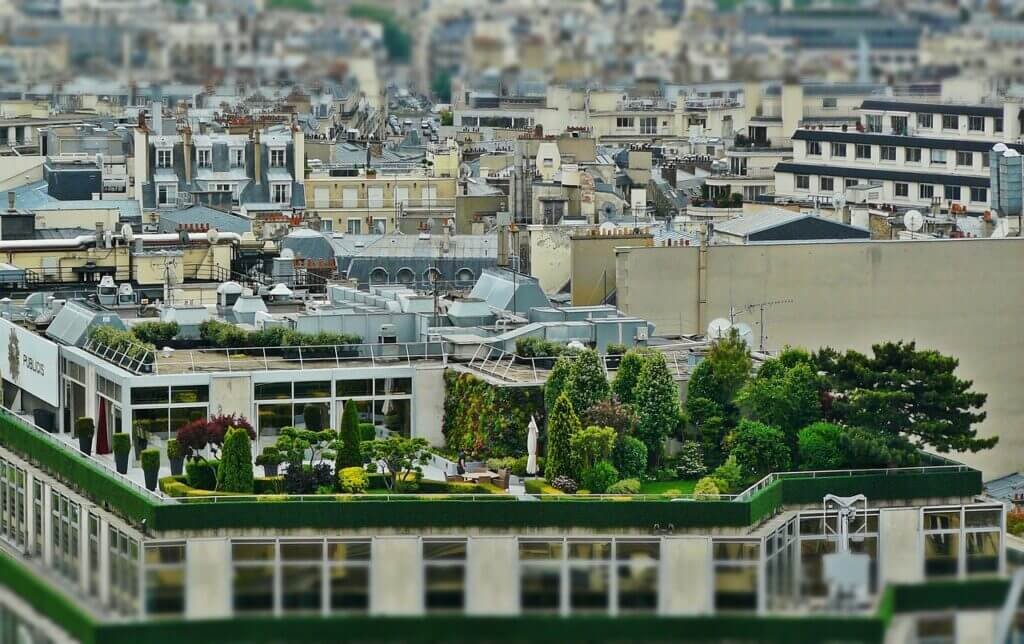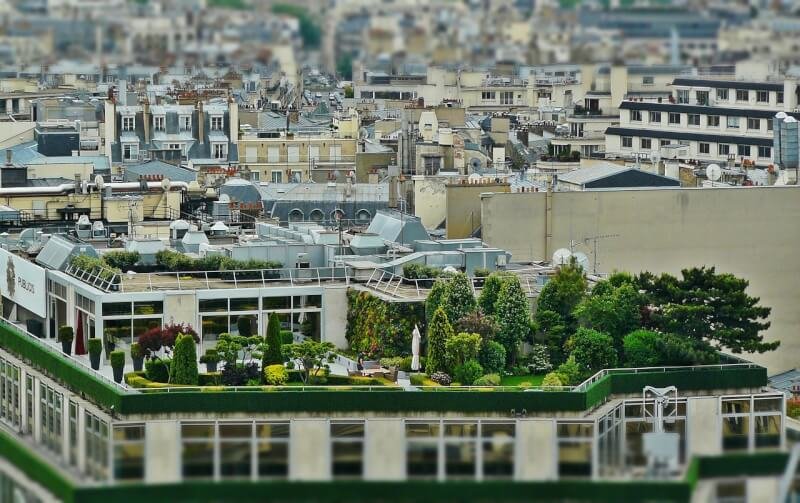Imagine waking up in your high-rise apartment to the soothing scent of fresh flowers and the vibrant greenery of a garden right outside your window. The idea of starting a garden in a high-rise building might seem daunting, but with a little creativity and some helpful tips, you can transform your urban space into a thriving oasis. In this article, we will explore the various ways you can embark on this rewarding journey, from selecting the right plants to maximising the available space and ensuring proper care. Get ready to bring nature closer to home and create your own green haven in the sky!

Choosing the Right Plants
Consider the Lighting Conditions
When starting a garden in a high-rise building, it’s crucial to consider the lighting conditions in your space. Assess how much natural light your plants will receive throughout the day. Take note of any obstacles such as buildings or trees that could potentially block sunlight. It’s important to choose plants that are suitable for the amount of light available in your indoor space.
Select Plants that Thrive Indoors
As you begin your high-rise garden journey, it’s essential to select plants that thrive indoors. Some plants are better suited for indoor environments, as they can adapt to lower light levels and limited space. Look for varieties such as snake plants, pothos, spider plants, and peace lilies that are known for their ability to thrive indoors. These plants are not only low maintenance but also effective in purifying the air, making them excellent choices for your high-rise garden.
Choose Plants Suitable for Containers
In a high-rise building, space might be limited, so it’s important to choose plants that are suitable for containers. Opt for plants that have compact growth habits and don’t require extensive root systems. Herbs like basil, thyme, and parsley, as well as small vegetables like cherry tomatoes and lettuce, are great options for container gardening. Additionally, consider using hanging baskets or vertical gardening techniques to maximize your available space.
Preparing the Space
Assess the Available Space
Before diving into your high-rise garden project, take the time to assess the available space. Look for areas that receive adequate sunlight and are easily accessible. Consider using window ledges, balconies, or even unused corners of your living space. Taking stock of your available space will help determine the size and number of plants you can accommodate, ensuring a successful and enjoyable gardening experience.
Evaluate the Structural Capacity
When planning a high-rise garden, it’s crucial to evaluate the structural capacity of your living space. Ensure that the floors, walls, or any other surfaces where you plan to place your plants can support the weight. Assessing the structural capacity will help prevent any accidents or damage that could occur due to excessive weight. If you’re unsure about the structural integrity, consult a professional before proceeding with your gardening plans.
Ensure Proper Drainage
Proper drainage is essential for the health and success of your high-rise garden. As you prepare the space, ensure that you have adequate drainage options in place. Consider using containers with drainage holes or placing pebbles and gravel at the bottom of your pots to promote proper water flow. Proper drainage will prevent waterlogging, which can lead to root rot and other fungal diseases, ensuring that your plants thrive in their new environment.

Supplies and Tools
Gather Essential Gardening Supplies
To start your high-rise garden, gather all the essential gardening supplies. These may include a trowel, pruning shears, watering can or hose, gloves, and a small hand rake. Having these basic tools on hand will make it easier to care for your plants and maintain their overall health. Additionally, consider investing in a soil pH testing kit to ensure that your plants receive the ideal soil conditions for optimal growth.
Invest in High-Quality Containers and Pots
Investing in high-quality containers and pots is crucial for a successful high-rise garden. Opt for containers made of durable materials, such as ceramic or plastic, that can withstand the outdoor elements if your garden is on a balcony or terrace. Choose pots with proper drainage holes to prevent water accumulation and potential root issues. Remember, investing in good-quality containers will ensure the longevity of your garden and provide a visually pleasing aesthetic.
Get the Necessary Tools
Apart from the basic gardening supplies, there are specific tools that you may find useful in your high-rise garden. Consider acquiring a watering wand attachment for your hose to reach plants that are difficult to access. A lightweight step ladder can be handy for tending to plants placed in higher spaces. Additionally, a small fan or portable air circulator can help improve air circulation indoors, keeping your plants healthy and reducing the risk of mold or disease.
Creating the Growing Environment
Ensure Adequate Lighting
In a high-rise building, natural light sources may be limited, especially if your garden is situated on an interior section of your living space. Ensure the plants receive adequate lighting by using artificial grow lights. LED grow lights are an excellent choice as they are energy-efficient and emit the right spectrum of light for plant growth. Position the grow lights at an appropriate distance above your plants to provide them with the necessary light energy for photosynthesis.
Provide Proper Ventilation
Proper ventilation is crucial for maintaining a healthy growing environment in your high-rise garden. Even though you are indoors, fresh air circulation is essential to prevent stagnant air and the buildup of moisture. Open windows whenever possible to allow for natural airflow. If your garden is in a closed space, consider using a small fan or air circulator to keep the air moving. Good ventilation will help prevent plant diseases, mold, and pest infestations.
Maintain an Ideal Temperature
Maintaining an ideal temperature is crucial for the success of your high-rise garden. Most indoor plants thrive in temperatures between 65-75°F (18-24°C). Avoid placing your plants near drafty windows or areas with extreme temperature fluctuations. If your living space tends to get too cold or too hot, consider using a heater or air conditioner to maintain a stable temperature. Remember that different plant species have specific temperature preferences, so research each plant’s ideal temperature range for optimal growth.

Soil and Fertilizer Considerations
Choose the Right Potting Soil
Choosing the right potting soil is essential for the health and growth of your high-rise garden. Opt for a well-draining potting mix specifically formulated for container gardening. Look for soil mixes that contain a balanced blend of organic matter, such as compost or peat moss, and provide adequate nutrients for your plants. Avoid using garden soil as it may not provide the necessary drainage or nutrition required for potted plants.
Consider Fertilizer Options
Fertilizers play a vital role in supplying essential nutrients to your high-rise garden plants. Consider using slow-release fertilizers specifically designed for container gardening. These fertilizers release nutrients gradually over time, providing a steady source of nourishment for your plants. Alternatively, you can opt for organic fertilizers such as compost or worm castings to enrich the soil naturally. Follow the instructions on the fertilizer packaging to ensure proper application and dosage.
Implement Composting Practices
Composting is a sustainable practice that can benefit your high-rise garden. Collect kitchen scraps such as fruit and vegetable peels, coffee grounds, and eggshells to create nutrient-rich compost. Compost not only improves soil fertility but also helps retain moisture, reduces the need for synthetic fertilizers, and promotes beneficial microorganisms in the soil. Consider starting a small composting bin or opt for a compact composting system suitable for indoor use.
Watering and Irrigation
Develop a Watering Schedule
Watering is an essential aspect of maintaining a thriving high-rise garden. Develop a watering schedule based on the specific needs of your plants. Factors such as the type of plant, container size, and environmental conditions will influence how often and how much you should water. Before watering, stick your finger into the soil to check for moisture levels. If the top inch of soil feels dry, it’s time to water. Avoid overwatering, as it can lead to root rot and other plant issues.
Invest in Self-Watering Systems
In a high-rise building, it can be challenging to water plants consistently. Investing in self-watering systems can be a game-changer for your garden’s success. Self-watering containers have built-in reservoirs that allow plants to absorb water as needed, reducing the risk of over or underwatering. Another option is using water globes or terracotta watering spikes that slowly release moisture over time. These systems help maintain consistent moisture levels, ensuring healthy plant growth even if you’re away for a few days.
Consider Drip Irrigation Systems
For larger high-rise gardens or gardens that require frequent watering, drip irrigation systems can be beneficial. These systems deliver water directly to the roots of each plant, minimizing water waste and promoting efficient water usage. Drip irrigation systems can be set on timers, allowing for automated watering at specific intervals. This is especially useful if you have a busy schedule or are away from home frequently. Consider consulting a professional to help design and install a drip irrigation system tailored to your garden’s needs.
Pest Control Measures
Identify Common Indoor Pests
Even in a high-rise building, indoor plants can be susceptible to pests. Common indoor pests include aphids, spider mites, mealybugs, and fungus gnats. Regularly inspect your plants for any signs of pest infestations, such as discolored leaves, sticky residue, or the presence of tiny insects. Identifying the pests early on will allow you to take appropriate measures to control and eliminate them, ensuring the health and well-being of your plants.
Implement Organic Pest Control Methods
When dealing with pests in your high-rise garden, consider implementing organic pest control methods. These methods are safe for both your plants and the environment. Neem oil, insecticidal soaps, and horticultural oils are effective options for controlling common indoor pests. Additionally, introducing natural predators such as ladybugs or predatory mites can help keep pest populations in check. Avoid using chemical pesticides, as they can harm beneficial insects and disrupt the natural balance of your garden ecosystem.
Use Beneficial Insects
To naturally control pests in your high-rise garden, consider using beneficial insects. Ladybugs, lacewings, and predatory mites are examples of beneficial insects that feed on common indoor pests. You can purchase these insects or their larvae from garden centers or online suppliers. Introduce them into your garden and let them do the work of controlling pest populations. By incorporating beneficial insects into your pest control strategy, you can maintain a harmonious and pest-free garden environment.
Pruning and Maintenance
Regularly Monitor the Plants
Regularly monitoring your high-rise garden plants is essential for their overall health and growth. Take the time to observe the plants closely, checking for any signs of disease, nutrient deficiencies, or growth issues. Inspect the leaves, stems, and overall appearance of each plant to identify any potential problems. By being proactive and addressing any issues promptly, you can ensure that your plants remain vibrant and productive.
Trim and Prune as Needed
Trimming and pruning are important maintenance tasks for your high-rise garden. Regularly trim off any dead or yellowing leaves to promote healthy growth. Prune plants that have grown too tall or bushy to maintain their shape and prevent overcrowding. Additionally, removing any diseased or damaged parts will help contain the spread of infections and keep your garden thriving. Use clean and sharp pruning shears to make precise cuts and minimize the risk of damage.
Remove Dead or Diseased Parts
It’s crucial to remove dead or diseased parts from your high-rise garden plants. Dead leaves or stems can attract pests and disease, and leaving them in the garden can negatively impact the overall health of your plants. Regularly inspect your plants and remove any withered or infected parts, disposing of them properly. By practicing good garden hygiene and removing dead or diseased parts promptly, you can maintain a clean and healthy environment for your plants to thrive.
Harvesting and Enjoying the Produce
Determine the Optimal Harvesting Time
As your high-rise garden flourishes, you’ll have the joy of harvesting and enjoying the produce you’ve grown. Each plant has its own specific harvesting time, so it’s important to determine the optimal moment to pick your herbs and vegetables. Research the specific harvesting guidelines for each plant you’re growing, and pay attention to visual cues and flavor indicators. Harvesting at the right time ensures the best taste and texture for your culinary delights.
Enjoy Fresh Herbs and Vegetables
One of the greatest pleasures of having a high-rise garden is enjoying the fresh herbs and vegetables you’ve grown. Incorporate your homegrown produce into your cooking to elevate the flavors of your meals. Sprinkle freshly picked herbs over your favorite dishes, savor homegrown tomatoes in a salad, or add homegrown greens to a stir-fry. The satisfaction of indulging in your own garden’s bounty is truly rewarding and adds a delightful touch to any meal.
Try Different Recipes and Culinary Uses
Experimenting with different recipes and culinary uses for your high-rise garden produce can be a fun and creative experience. Get inspired by trying new recipes that highlight the flavors of your homegrown herbs and vegetables. Make homemade pesto with fresh basil, create infused oils with fragrant herbs, or experiment with vegetable-based smoothies and juices. The possibilities are endless, and your high-rise garden can be a source of endless culinary inspiration.
Community Gardening Opportunities
Join Local Gardening Groups
If you’re enthusiastic about gardening and want to connect with like-minded individuals, consider joining local gardening groups. These groups provide a platform for sharing knowledge, experiences, and even plant cuttings. You can exchange tips, seek advice, and participate in community events centered around gardening. Engaging with a gardening community can inspire you, provide valuable insights, and foster a sense of belonging and camaraderie.
Participate in Rooftop Gardens
Some high-rise buildings offer rooftop gardens or communal gardening spaces. Take advantage of these opportunities and participate in rooftop gardening initiatives if available. Rooftop gardens allow you to expand your gardening capabilities and learn alongside fellow gardeners. They offer a unique perspective, providing a chance to cultivate plants in a more open and elevated environment. Engaging with rooftop gardens can enhance your gardening skills and contribute to sustainability efforts in urban areas.
Support Community Gardens
Even if you don’t have access to a rooftop garden or communal space within your high-rise building, you can still support community gardens in your area. These gardens serve as green havens that bring communities together and promote sustainable living. Consider volunteering your time, donating gardening supplies, or even sponsoring specific projects within the community gardens. Supporting these initiatives not only benefits the environment but also fosters a sense of unity and shared responsibility for a greener future.
Starting a garden in a high-rise building may initially seem challenging, but with careful planning and attention to detail, it can be a rewarding experience. By choosing the right plants, preparing the space, gathering essential supplies, and creating an ideal growing environment, you can successfully cultivate a thriving high-rise garden. From maintaining proper soil and fertilizer conditions to implementing effective watering and pest control measures, every step contributes to the health and productivity of your plants. Lastly, remember to enjoy the journey, experiment with different culinary uses for your harvest, and connect with the larger gardening community through local groups and community gardens. Happy gardening in your high-rise oasis!


